
Alan Aldridge was born in London’s East End in 1943. Aldridge has brought a new twist into the music industry as well as graphic design through his rich designs. His designs and visuals defined the Beatles image into the music world.
Today, Aldridge is responsible for the Hard Rock Café and the Los Angeles, House of Blues. Through the years he has broaden his talent and became a phenomenal artist, illustrator, graphic designer, art director as well as a film maker. Aldridge has breathed fresh breath back into the world of books through his elaborate original graphic entertainment. He refers to himself as a, ‘graphic entertainer’ and has not shown us anything less.
Aldridge has gone from creating art work for Penguin book covers, to his relationship with the Beatles and their record company, and now as creative director to the original Hard Rock Café. With all of his hard work the Design Museum, in his home town, will be displaying every piece of art work that he has created.
OUR ARTISTS
Allen Jones


Alphons Mucha
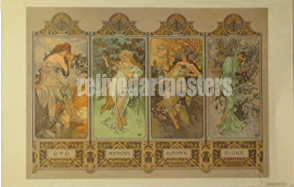
Arthur Rackham
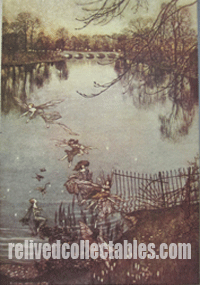
Born in 1937 at Southampton, studied painting and lithography from 1955 to 1961 at Horsney College of Art in London, where the teaching method was based largely on Klee's "Pedagogical Sketchbook". During this period he travelled to Provence and to Paris, where he was highly impressed by the work of Delaunay. In 1959 he visited the Musie Fernand Liger in Biot. In 1960 he was expelled from the Royal College of Art, where he had studied with R. B. Kitaj, Peter Phillips, David Hockney and Derek Boshier. Between 1961 and 1963 he taught lithography at Croydon College of Art.
His work in the early sixties was influenced by psychology and by his reading of Nietzsche, Freud and Jung. In 1963 he received the Prix des Jeunes Artistes at the Paris Biennale. In 1964 he moved to New York and travelled throughout the USA. In New York Hockney drew his attention to the world of mass-produced consumer goods imagery. He worked on a three-dimensional illusionism with obvious erotic components. In 1969 Allen Jones made the sculptures Table Sculpture and Hat Stand (images below), which became the most famous artwork around. The female furniture at the Korova Milkbar scene in Stanley Kubrick's controversial Clockwork Orange (1971) was inspired by this work, but not created by Allen Jones as is sometimes mistakenly claimed.
From 1968 to 1970 he was Guest Lecturer at the Hochschule für Bildende Künste, Hamburg. In 1969 he was Visiting Professor at the University of South Florida, Tampa. In 1973 he was Guest Lecturer at the University of Los Angeles, Irvine. He visited Japan in 1974. He toured Canada in 1975. In 1976 he designed Barbet Schroeder's film Maitresse. In 1977 he was Guest Lecturer at the University of California, Los Angeles, and in the summer of the same year, Visiting Director of Studies in painting and drawing at the Banff Center School of Fine Arts in Alberta, Canada. He designed a hoarding in 1978 for the hosiery factory Fogal at Basle station. He had a large retrospective exhibition in 1979 at the Walker Art Gallery, Liverpool, also shown at the Serpentine Gallery, London, at Sunderland, Baden-Baden and Bielefeld. From 1982 to 1983 he was Guest Professor at the Hochschule der Künste, Berlin. In 1986 he was made R.A.
July 24,1860 to July 14, 1939
Alphons was born in Ivančice, Moravia, today's Czech Republic. In his young years he worked in decorative painting mostly in theatrical themes. Drawing has always been his passion. He made a few career moves after completeing his studies. Starting in Vienna working in theatrical design until a fire destroyed the business. From there he moved back to Moravia doing freelance work in decorative/ portrait paintings. In1887, Mucah moved to Paris is where he worked with advertising illustrations, transitioning into lithograph posters. With the success of his poster featuring Sara Bernhardt he was immediately signed a six year contract with her.
Alphons work was greatly popular during his life, but was considered outdated. Mucha’s work sparatically becomes big interest for illustrators and artists. The interest peaked in the 1960s, Art Nouveau, and style within the psychedelic poster ‘Hapshash and the Coloured Cat’.
September 19, 1867 to September 6, 1939
Arthur Rackham was born in London, England and then at the age of 17 he relocated to Australia. While working as a clerk at Westminster Fire Office he was studying at Lambeth School of Art part-time. Eight years later he left his clerical job at the Fire Office and started his journey as an Illustrator and Reporting with the Westminster Budget. A short year later, his first book illustration was published in “To Other Sides” by Thomas Rhodes, but his entry in “The Dolly Dialogues” in 1894 really set the tone for his career.
Arthur Rackham was considered the leading illustrator of the British Golden Age, 1900 to 1939. Rackham is said to have invented his own technique which mimics photographic reproduction: sketching an outline, softly blocked in shapes, add lines in with pen and India ink, and then managed to erase the pencil marks before then ink dried. His work flourished after his passing in 1939 in North America along with Britain, it is very difficult to obtain original publications due to being produced as limited editions. Although, we do see much of his work used in the greeting card industry.

OUR ARTISTS
Aubrey Beardsley

Charles Csuri



David Hockney
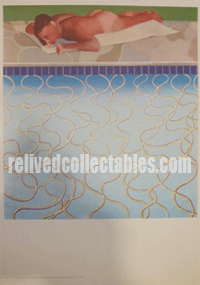
David Steen

OUR ARTISTS

Graham Percy


Jann Haworth
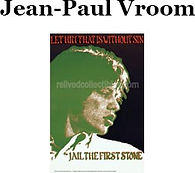



OUR ARTISTS
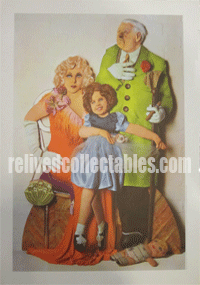
Michael English
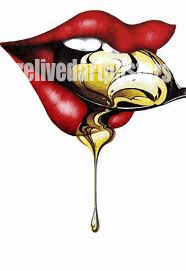
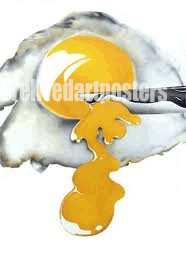

Pauline Baynes
Steve Schapiro

Otmar Alt
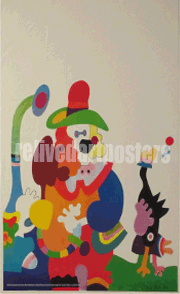
August 21, 1872 to March 16, 1898
Aubrey Vincent Beardsley was an illustrator and author born in Brighton, England. He did his studies at Westminster School of Art and generously contributed to the Art Nouveau, Aestheticism movement. Beardsley’s style emphasized the horrific, decadent, and erotic which was influenced by the style of Japanese woodcuts, all completed in black ink.
Even though his life and career was short-lived, we divide his work up by his signature. Beardsley early work was unsigned, then incorporated his initials, and used Japanese symbols/marks. He was considered the most controversial artist of the Art Nouveau period because of his dark, perverse themes.
Charles Csuri attending Ohio State University in the 1940’s and took an absence of leave to serve as a soldier in Europe during WWII. He completed his BORNF. A and M.A degrees in art in 1948.
Csuri went on to be an art professor and oil painter for 18 years at OSU and showed his work professionally on his time in New York from 1955-1965. In 1963 he found his interest in creating art with computers. This became his life-long exploration to intertwine texture and graphic movement. He began receiving international recognition and awards for his computer arts in 1960’s.
From here on out he received all sorts of awards and prizes for his creative talent thro computer arts and now has 75 private collections worldwide.
Smithsonian Magazine in 1995 referred to him as the ‘father of digital art and computer animation’.
Computer created digital art was at the beginning stages back in the late 60’s and early 70’s. Know one ever saw this type of art before since computers were only being introduced to the consumer markets. Creating computer artwork was unheard of.
All of these originals were created by artists that were trying to make it big in the art world. These pieces are all originals which were shown and first introduced in different art exhibitions in the late 60’s. This revolution enhanced many different fazes of art and inspired artists even to this day.
David Hockney was born July 9, 1937 in Bradford, England. Hockney was born with the condition of Synesthesia, he views synthetic colors in response to a musical stimuli. This was not directly reflected in his work, but is an underlying tone in his design for stage sets. He completed his studies at both Bradford College of Art and Royal College of Art in London. While at Royal College he was featured in the Young Contemporaries exhibit, which was said to when British Pop Art emerged.
Hockney created portraits of friends, prints, and stage designs, while incorporating styles of his favorite artists. Later in life he relocated from England to California, switched from oil to acrylic paint and dabbled in lithographs creating what he called “joiners”. He used Polaroid prints arranged them in a grid manner, which depicts movement. His tactic evolved over time; in 1985 he used the program Quantel Paintbox allowing him to sketch directly on the computer screen. David still is creating portrait art using oil and a canvas to drawing arts on the iPad.
David Hockney is considered a important contributor of the 1960’s and is the most influential British artists of the 20th century.
David Steen was born February 16, 1936 in London, England. His struggle with Dsylexia at a young age left him with less educated than other artists. The photographer, Bert Hardy, taught the 15 year old Steen photography. Three years of small jobs led him to a larger foreign role in Paris, which kick started his career. From there he worked for the National Service traveling as an Army photographer. This experience was the ultimate training in photojournalism.
After the war was over he returned to working in magazine and newspaper photography. David Steen is best known for the picture of a woman giving birth under hypnosis ‘Birth of a Baby’. This image led him to win First Prize in Encyclopedia Britannica’s Best Picture of the Year, very impressive for Steen only being 21.
David Steen believes himself to be lucky, being in the right place at the right time.
David Vaughan was born in Manchester in 1944 and been the foundation of British underground art since 1960’s. He painted his first artwork at the age of 15. His murals got recognized for the smoothness of lines and boldness of color while he was still a student at Slade School in London and won many commissions for his murals. Vaughan also studied at the Ashton School of Art and Bradford College of Art.
In the later 1960’s his posters reflected the drug-fuelled idealism of his times and his work was known as a “modern Goya”. With each poster he would put vibrant colors to represent what life would be like if purity and light replaced anger and darkness.
Vaughan initially worked with photographer David Bailey producing posters. His 1960’s prints are now auctioned in numerous venues. His etchings have become an acquired taste by collectors. His posters became collector pieces for numerous clients such as, Eric Clapton, John Lennon, Jimmy Hendrix, and the late HRH princess Margaret. His etchings have been successfully exhibited throughout London, Paris, Germany, Canada, and the USA.
Not only did Vaughan paint murals he also got involved in customizing cars for the pop stars and decorating buildings, boutiques, nightclubs, and private homes with his psychedelic designs. He also got into customizing furniture for people such as Henry Moore and Sir Paul McCartney.
David Vaughan died on December 4 at the age of 58. His beautiful posters still live on and are being displayed in art galleries all over the world.
June 7, 1938 to January 24, 2008
Graham Percy is a New Zealand native who specialized in illustration in childrens books. He studied Graphic Design at the Royal College of Art in 1967. From there he worked as a freelance artist, aiding in the creation of pop up books, board books, and pull tab books.
Ivan Ripley was born 1939 in Portsmouth, Hampshire, UK. He attended the Portsmouth College of Art in 1956 and then continued his education at Munich Academy of Fine Art in 1961 until 1963.
Ripley was a published author and illustrator. Some of his public credits include At Home With Handwriting (At Home With 5-6 Years), At Home With Handwriting (At Home With 6-7 Years), At Home With Handwriting (New Oxford Workbooks).
Jann Haworth was born 1942 into an already creative family. Mother Miriam Haworth well-known artist, and father Ted Haworth Academy Award winning art director. Jann studied at UCLA and then made the move to London where expanded her knowledge at Courtauld Institute of Art and Slade School of Fine Art. Haworth made a name for herself in this male dominant environment.
While at Slade was the beginning of the soft sculpture and led to the iconic “Old Lady” and life sized figures incorporating a lot of American Culture. Her other most defining aspect in her career was joining with Pauline Boty, co-creator of the Beatles album cover of Sgt Pepper’s Lonely Hearts Club Band.
She is considered now as a pioneer of soft sculpture.
Jean-Paul Vroom was born in 1922 in The Hague. Before he left for Paris at the age of 16 he studies at the Royal Academy. While he attended the Royal Academy, he produces many engravings, lithographs, and paintings.
In the 1960’s he became interested in photography, theater and directing films. The design for Becket’s Waiting for Godot was his first work for the theater. Vroom’s close association with choreographer Hans van Manen is evident throughout his collection of art that he made for Van Manens’s ballets over the years.
Martin Sharp was born in Sydney in 1944 and studied under artist Justin O’Brien at Cranbrook Private School. He also attended National Art School at East Syndey in 1960 where he began his career as an artist.
He is an Australian Artist, songwriter, cartoonist, and film-maker. Since the early 1960’s he has been well known for his contributes to Australian and international culture. Sharp has become Australia’s prime pop artists for his artwork. He is a Member of the Order of Australia for all his hard work and contributions to the pop movement and the support of all the young artists.
Sharp has been known to work with other artists such as Rick Griffin, Stanley Mouse, Hapshash & The Coloured Coat, and Milton Glaser. With Sharps psychedelic posters of Dylan, Donovan and others which are all classics of the genre, has ranked him to be the king of the UK poster scene since the 1960’s. Sharp was given the opportunity to use his covers, illustrations and cartoons to be featured as the covers of Oz magazine in both Australia and London.
In 1965 Sharp opened his first one-man exhibit located at the Clune in Sydney called “Art for Mart’s Sake.” In 1966 Sharp published his cartoons in the book Martin Sharp Cartoons. After Sharp made his way to London his work with Oz made him internationally renowned. Before he left London in 1969, Sharp held his second exhibit at the Sigi Krauss Gallery entitled, “Sharp Martin and his Silver Scissors.”
In 1972 when Sharp return to London he created “Art Book” with 36 color collages bringing together the work of Van Gogh on Van Gogh, Van Gogh on Botticelli, or Vermeer on Vermeer.
Sharps greatest inspiration besides Van Gogh was, Tiny Tim. In the 1970’s Sharp became a musical producer to singer Tiny Tim, and Luna Park. He also co-wrote for music sensation Eric Clapton.
Hapshash and the Coloured Coat were a British graphics team consisting of Michael English and Nigel Waymouth in the 1960s, producing psychedelic posters.
They designed usually brightly coloured images with a strong art nouveau influence from Alfons Mucha of swirling lines and curving shapes. Posters were used to promote appearances by major bands of the time such as the Pink Floyd and The Incredible String Band, as well as singers such as Julie Felix, mainly for the underground UFO Club.
English and Waymouth met in late 1966. Waymouth had just opened London's first psychedelic boutique, Granny Takes a Trip, in the Kings Road, Chelsea. They worked together initially and very briefly under the name Cosmic Colors (producing only one poster) and then Jacob and the Coloured Coat (producing two posters), before settling on Hapshash and the Coloured Coat. Their posters were printed and distributed by Osiris Visions, a division of the underground press publication International Times. The duo also provided illutrations and posters for several editions of London Oz.
They also released an album, titled Hapshash and the Coloured Coat Featuring the Human Host and the Heavy Metal Kids in 1967, and a second one, Western Flier, in 1969. By this time English had left, and Waymouth strangely is mentioned in the liner notes as having decided to "record" the album, but not listed as one of the musicians.
The track "Blue Narcissus" appears on the United Artists Records 2004 sampler All Good Clean Fun CD re-package (Liberty 8660902), but was not on the original 1971 LP.
In 2000, the Victoria and Albert Museum mounted a retrospective exhibition of their work.
September 9, 1922 to August 1, 2008
Pauline Baynes born in Sussex, England developed into an English book illustrator which had her work featured in over 100 books. Her schooling began by being taught by her sister, and then enrolled at the Slade School of Fine Arts in England. A year later she volunteered for the Ministry of Defense, in the map making department where she acquired all the skills that led her to her success. Her most familiar work can be seen in the cover and inside illustration in the Chronicles of Narnia.
Photographer
Schapiro at a young age found his professional calling; finding the cameras potential mesmerizing, and desire to follow the passion of his idol Henri Cartier Bresson. Schapiro’s first formal photography training was under W. Eugene Smith. Smith taught him not only the technical skills but helped him develop a humanistic approach to photography.
During the ‘Golden Age of Photojournalism’ in the 1960s Schapiro had a prominent photo-essay picked up by the New York Times. Throughout his career he worked covering such events like; Civil Rights Movement, March on Washington, moving to an interest in motion pictures, and creating album covers.
July 17, 1940 to Present
Otmar was born in Wernigerode Germany, and focused in graphic arts, paint, design, and sculpting. Before attending his masters schooling, Alt held an apprenticeship as a shop window designer and poster artist. In 1959, Otmar studied decorative/applied arts, a year later; he enrolled in the Berlin Art Academy.
In the early 1970s Otmar began to work on printmaking techniques and sculpting in bronze, plastic and wood. Then he moved into other designs for “everyday living”, such as toys, porcelain figurines, and illustrating children’s books. Otmar’s work was geared to appeal to the art fanatic’s imagination and fantasies. It is said that his style, “evolved from poster-like to painterly without deviation from the artist's basic conception”.
